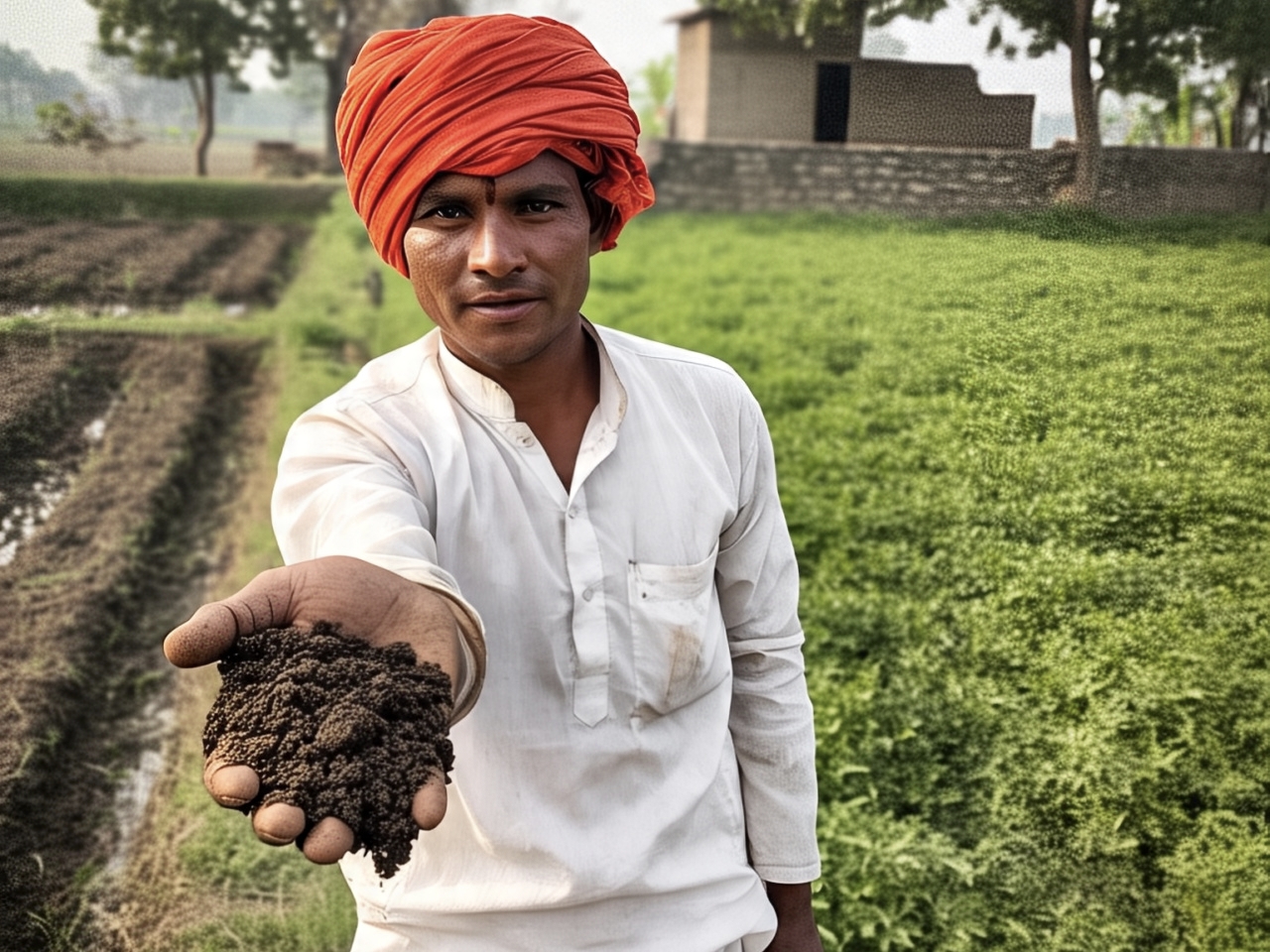Health
Why Soil Health Matters in Bihar
Published
2 months agoon

Soil is the base of farming. It feeds our crops, and in return, it feeds us. In Bihar, farming is not just a way to earn—it’s a way of life. Most families in villages depend on the land to grow rice, wheat, maize, pulses, and vegetables. So, when the soil starts losing its strength, it affects every home, every meal, and every pocket.
Over the years, Bihar’s soil has suffered. Excess use of chemical fertilizers, floods, and poor farming practices have reduced its natural richness. Many farmers have started noticing that their crops aren’t growing the way they used to. This is a clear signal that the soil is tired and in need of care.
Taking care of soil health is not difficult, but it needs awareness and effort. If farmers, local groups, and the government work together, Bihar’s land can be fertile again. Healthy soil means better crops, good income, and a strong future for millions.
The Soil Landscape of Bihar
Bihar is blessed with mostly alluvial soil, which comes from rivers like the Ganga and its branches. This type of soil is naturally rich and supports many crops. But even fertile soil can become weak if not taken care of. Over time, the organic matter in the soil reduces, and important nutrients get washed away.
In north Bihar, the land is more flood-prone. Too much water can cause waterlogging, which stops plant roots from breathing. In contrast, south Bihar has some hilly regions where soil erosion is a big problem. Wind and rain carry away the top layer, which is the most fertile part.
Different areas of Bihar need different care. That’s why soil testing is important. Knowing the type of soil and what it lacks helps farmers use the right fertilizers and techniques. If we treat soil according to its needs, we can bring back its lost strength.
Alluvial Soil – A Natural Gift
Most of Bihar’s land has alluvial soil, which is soft and full of nutrients. It’s great for farming rice, wheat, and vegetables. But if used without care, even the best soil can lose its strength. Balanced use of compost and organic matter helps maintain its quality over time.
Problems of Waterlogging and Erosion
Floods and heavy rains are common in Bihar. They cause water to stand in fields for long periods, damaging crops and soil. In upland areas, fast-flowing water washes away topsoil. This erosion reduces the land’s productivity and makes farming harder every year.
What the Government Is Doing
To help improve soil health, the government has started programs like the Soil Health Card Scheme. Under this scheme, farmers get a report about the quality of their soil. It tells them what nutrients are missing and which fertilizers to use in the right amount. This helps avoid overuse and saves money too.
The government also encourages organic farming. This means using compost, cow dung, neem-based sprays, and green manure instead of chemical fertilizers. Some areas are now being promoted as organic zones. Training sessions and farmer meetings are held regularly through Krishi Vigyan Kendras (KVKs) to teach modern, eco-friendly techniques.
Research centers and universities are also involved in finding region-specific solutions. These efforts, if expanded properly, can help farmers regain soil health and improve their harvests in a sustainable way.
Soil Health Cards
This government program gives farmers a report on their soil’s condition. It shows the level of nutrients like nitrogen, phosphorus, and potassium. With this information, farmers can apply the right mix of fertilizers, reducing waste and improving yields.
Simple Practices to Improve Soil
Improving soil health doesn’t always need big machines or lots of money. Small, consistent actions can make a big difference. One helpful step is crop rotation—changing the type of crop every season. This prevents the soil from getting exhausted and helps maintain balance. For example, growing pulses after a cereal crop helps add nitrogen back into the soil.
Adding organic compost like cow dung, kitchen waste, and crop leftovers is also effective. These materials break down and feed the soil naturally. Cover crops like green gram or mustard can be grown between main crops to protect the soil from drying out and erosion.
Farmers can also avoid deep plowing every season. Less disturbance keeps the natural structure and moisture of the soil intact. Over time, these small changes lead to better soil, better crops, and better income.
Compost and Biofertilizers
Using compost and natural fertilizers helps improve soil texture and brings back missing nutrients. These are affordable, easily available, and safe for the environment. Farmers can make compost at home using waste from farms and kitchens.
A Better Future Starts with Healthy Soil
Good soil is the start of everything. From the food on our plates to the income in a farmer’s hand, it all begins with healthy land. In Bihar, where agriculture touches nearly every family, keeping the soil strong is not an option—it’s a must.
We’ve seen the effects of poor soil: weak crops, low yields, and rising costs. But we’ve also seen that with care, soil can bounce back. When farmers use better methods and government programs reach the grassroots, things improve.
It’s time for a joint effort—from farmers, government workers, teachers, and even young students. Everyone can play a part in saving Bihar’s soil. Because when the soil is healthy, everything else follows: food, water, health, and hope.
Read Next: walter white quotes

A Start-Up with Patient Medical Stories

2 Story 2 Car Garage

100 Orange Juice Skip Opening Story

The Transformative Power of Technology in the Modern World

2 Year Mother’s Day Clothes: Adorable Styles to Celebrate the Day in Comfort and Joy

14th Century Clothing: A Detailed Look at Medieval Fashion and Style

Money Storm Slot Game: Where Every Spin Brings the Thrill of Fortune

Triple Double Diamond Free Games Slots: Classic Casino Fun with Big Wins

Best Running Trainers for Shin Splints: Find Comfort, Support, and Relief

Best Hair Products for Shine: Get That Healthy, Glossy Look Naturally

101 Warren Street New York City: Luxury Living in Tribeca

4 Seasons Nail Salon: A Place for Beauty, Relaxation, and Self-Care

10 Provost St Jersey City: A Complete Guide to Modern Living

2222 Jackson Ave Long Island City: A Modern Living Destination

6 Train Express Stops: A Complete Guide for New York City Commuters

Can You Get a Doctor’s Note Without Being Seen? A Complete Guide

Bella Donna Hair Salon: A Blend of Style, Elegance, and Care

Align Doctor Login Everything You Need to Know in Simple Words

Cutting Hair Style A Complete Guide to Modern Trends, Techniques, and Ideas

1920s Paris Business Women: The Bold Voices That Redefined Feminine Power

A Start-Up with Patient Medical Stories

2 Story 2 Car Garage

100 Orange Juice Skip Opening Story

The Transformative Power of Technology in the Modern World

2 Year Mother’s Day Clothes: Adorable Styles to Celebrate the Day in Comfort and Joy

14th Century Clothing: A Detailed Look at Medieval Fashion and Style

Money Storm Slot Game: Where Every Spin Brings the Thrill of Fortune

Triple Double Diamond Free Games Slots: Classic Casino Fun with Big Wins

Best Running Trainers for Shin Splints: Find Comfort, Support, and Relief









